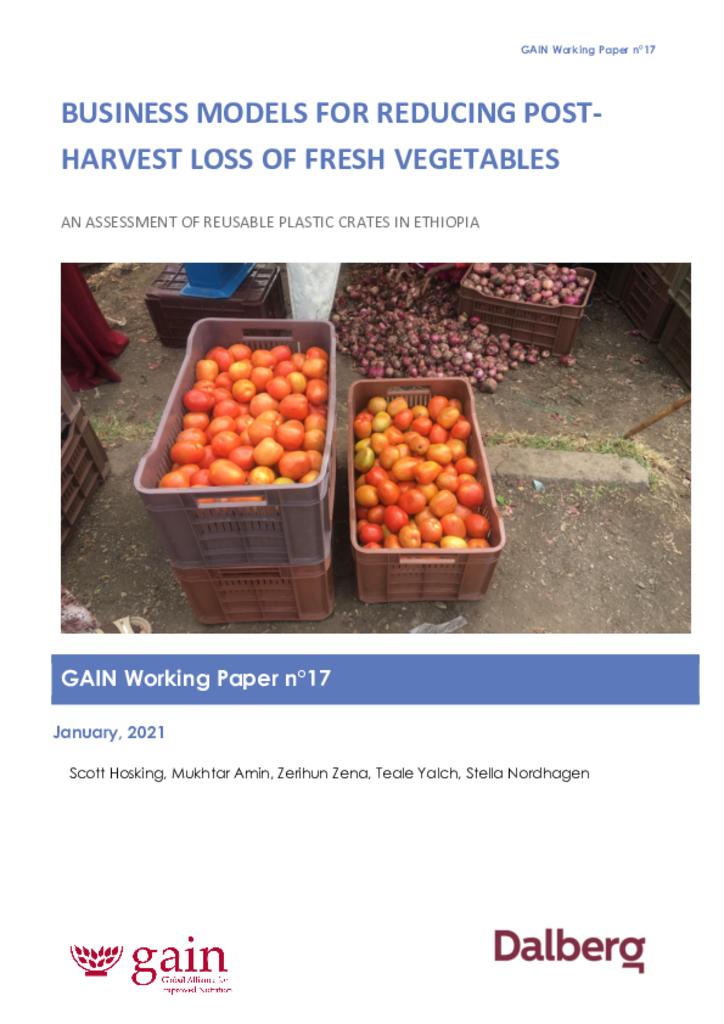Reducing post-harvest loss is one promising way to make nutritious foods more available, accessible, and affordable - all while improving the environmental sustainability of the food system. While viable technologies to reduce loss exist, they have limited uptake, particularly in low- and- middle income countries (LMICs).
To understand how to increase the use of technologies to reduce fruits and vegetable loss, this paper examines the use of Reusable Plastic Crates (RPCs) within Ethiopia’s tomato value chain. Based on stakeholder interviews and a literature review, we assess evidence on RPCs’ benefits and types of business models deployed in Ethiopia and globally.
The results show that RPCs are beneficial in reducing post-harvest loss, including for tomatoes, and have wider systemic benefits for the overall value chain, including introducing standardised measurements, which may improve transaction fairness. However, adoption and use of RPCs remain low in many LMICs. We thus examine two different RPC distribution models used in a GAIN-supported programme: farmer cooperatives renting out RPCs to member farmers and traders’ associations selling RPCs to their members at subsidised prices or on credit. While these low-cost models encourage uptake and adoption, they are found to be unsustainable in the long term, as the traders’ associations and cooperatives are not earning the revenue needed to replace or purchase additional RPCs. However, farmers and wholesalers currently using RPCs through these groups are earning extra from the reduction in tomato losses, indicating an opportunity to adapt models to enable sustainability by charging (higher) fees.
The main challenges that hinder RPCs adoption at scale are cost-related barriers to RPC ownership, market system inertia, and weak regulation. We discuss targeted interventions that could help address these challenges, including affordable, flexible financing, reducing the cost of RPCs, and using wholesalers as a value chain-agnostic entrance point to encourage wider adoption of RPCs.
